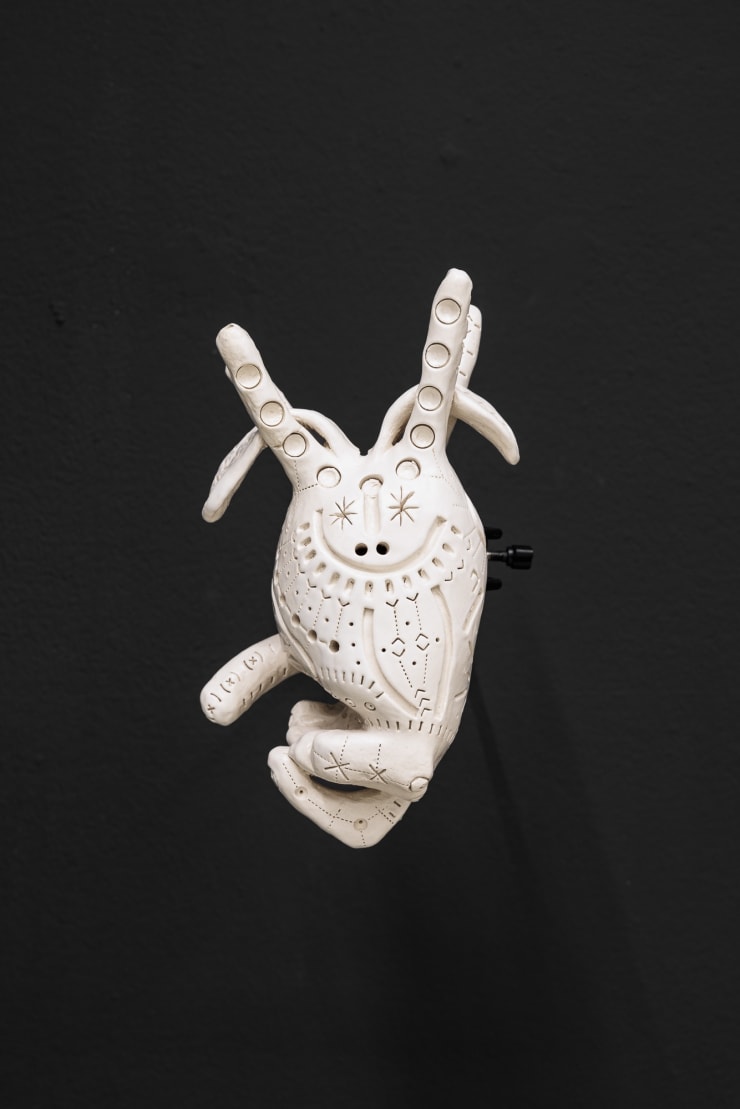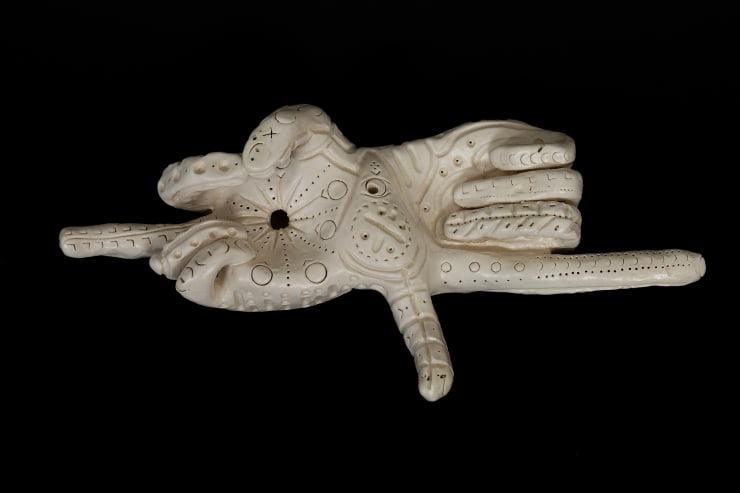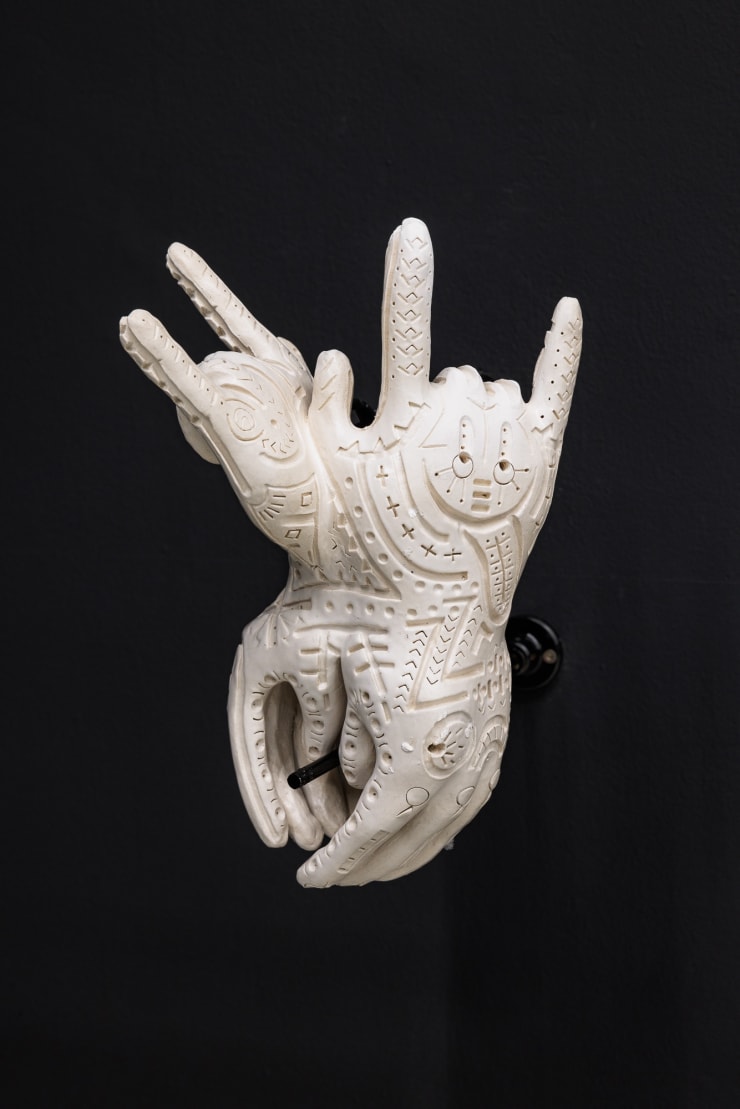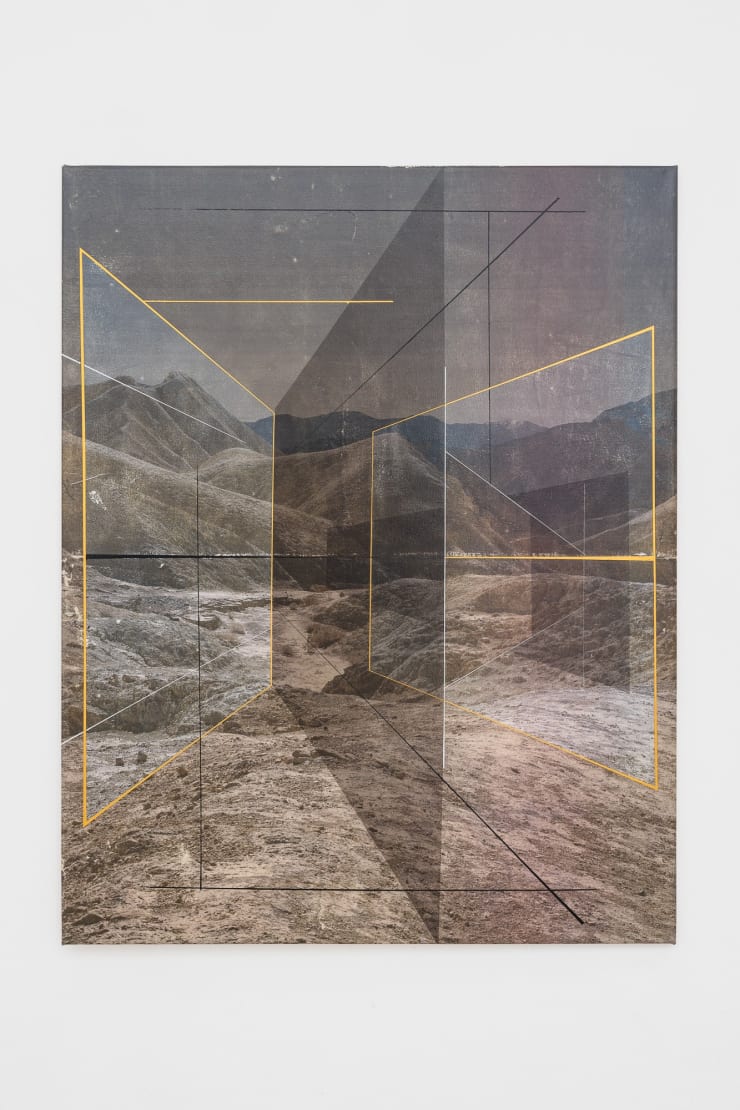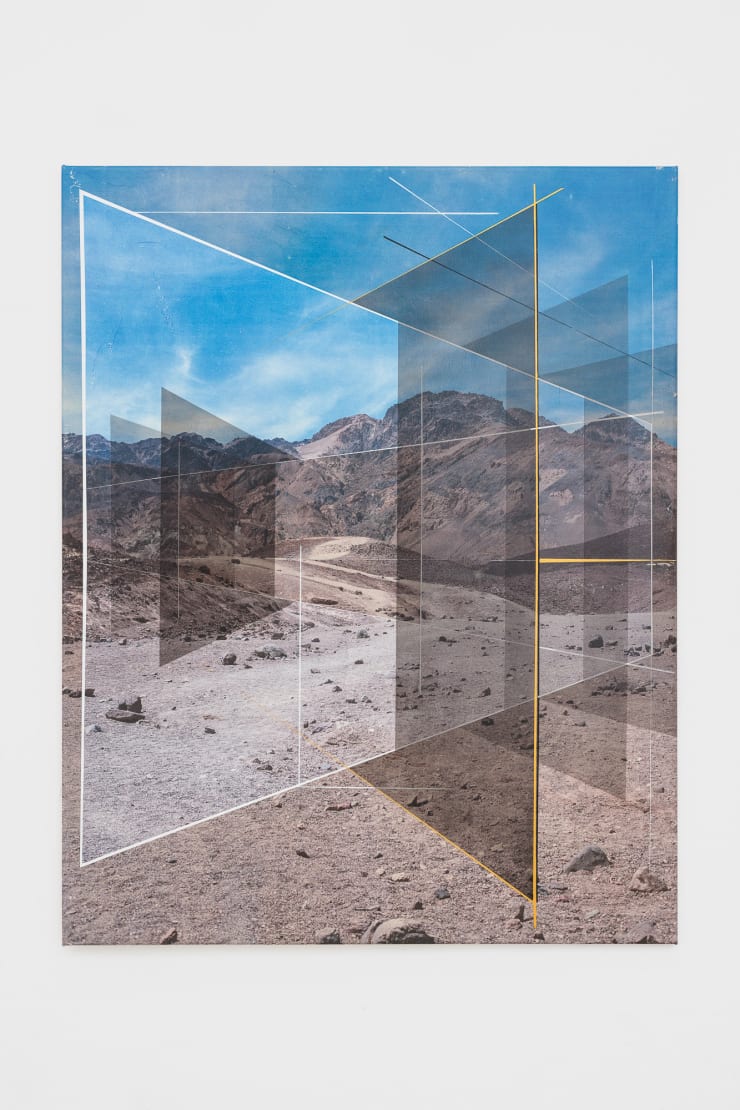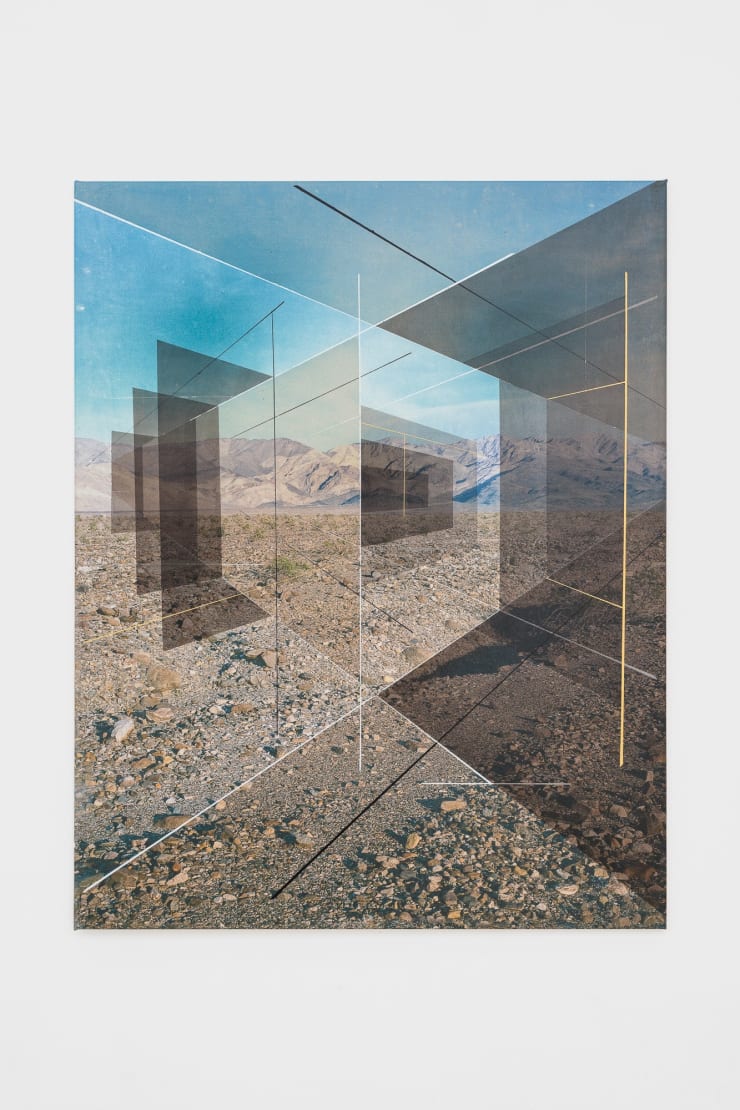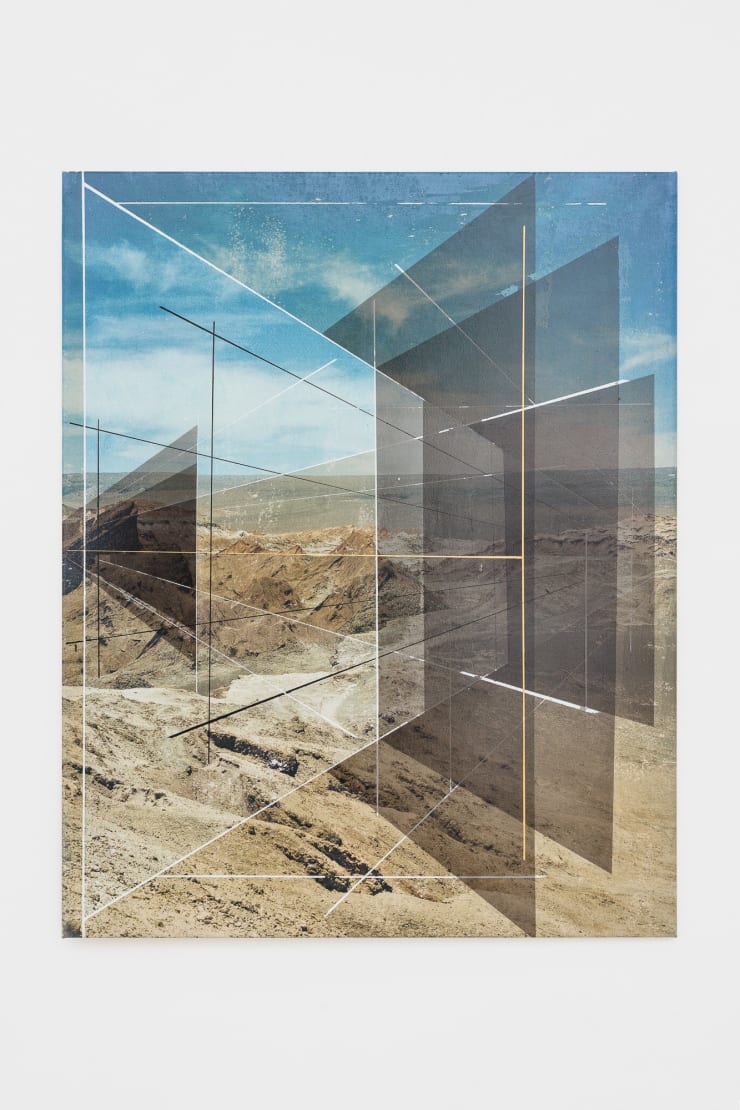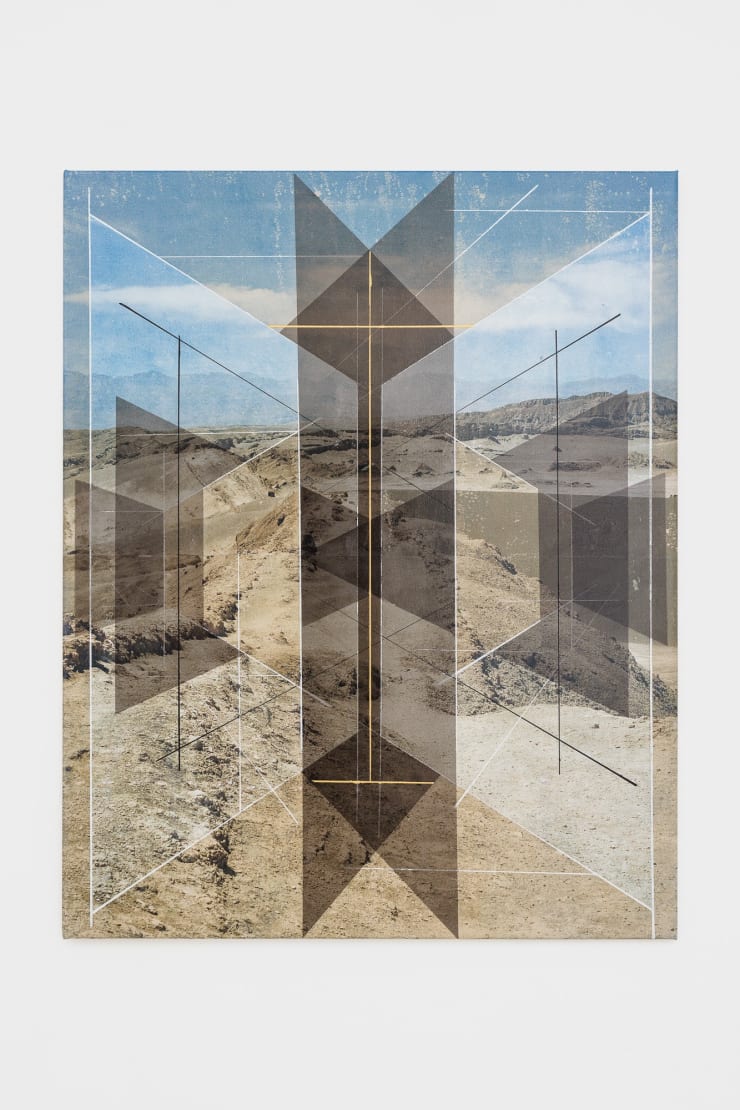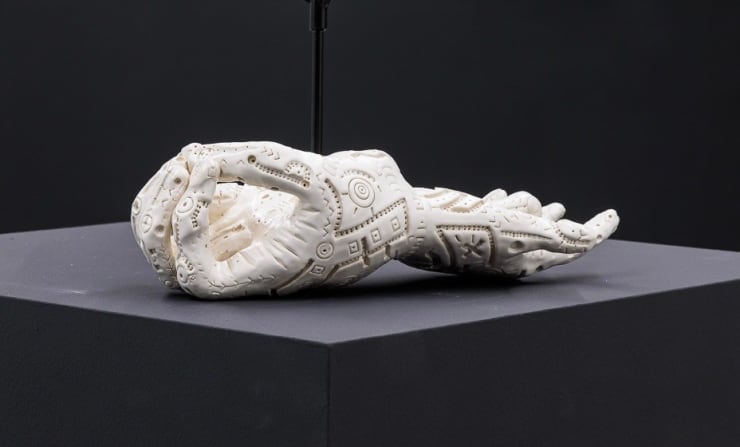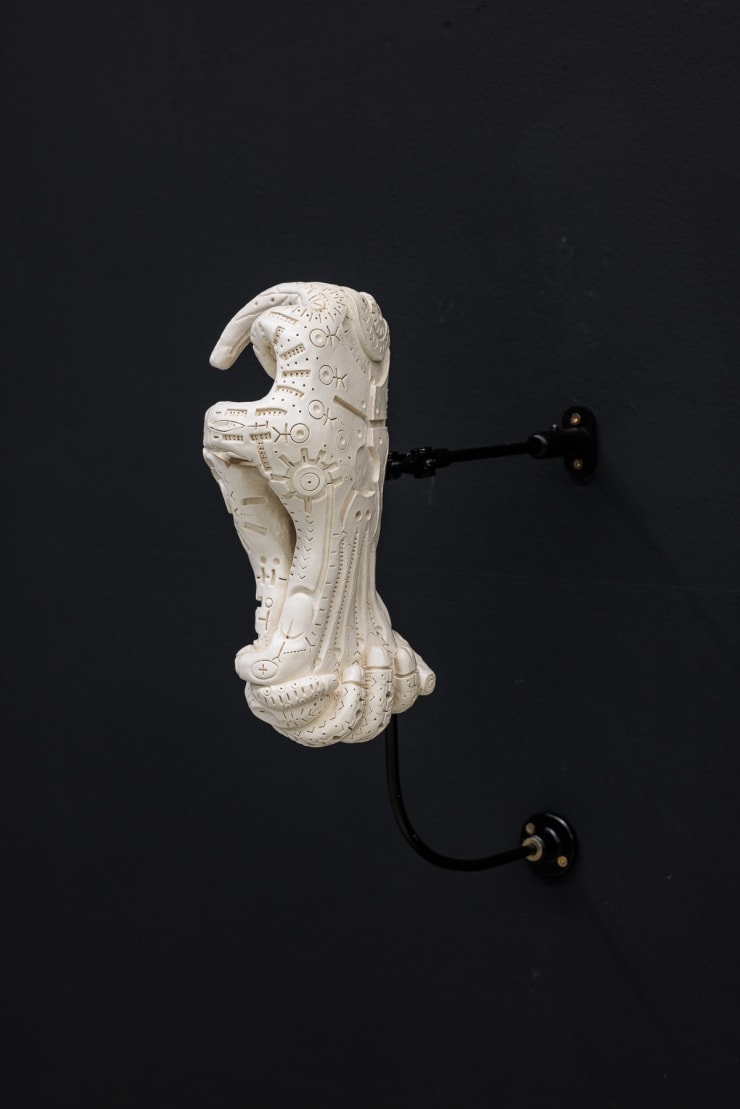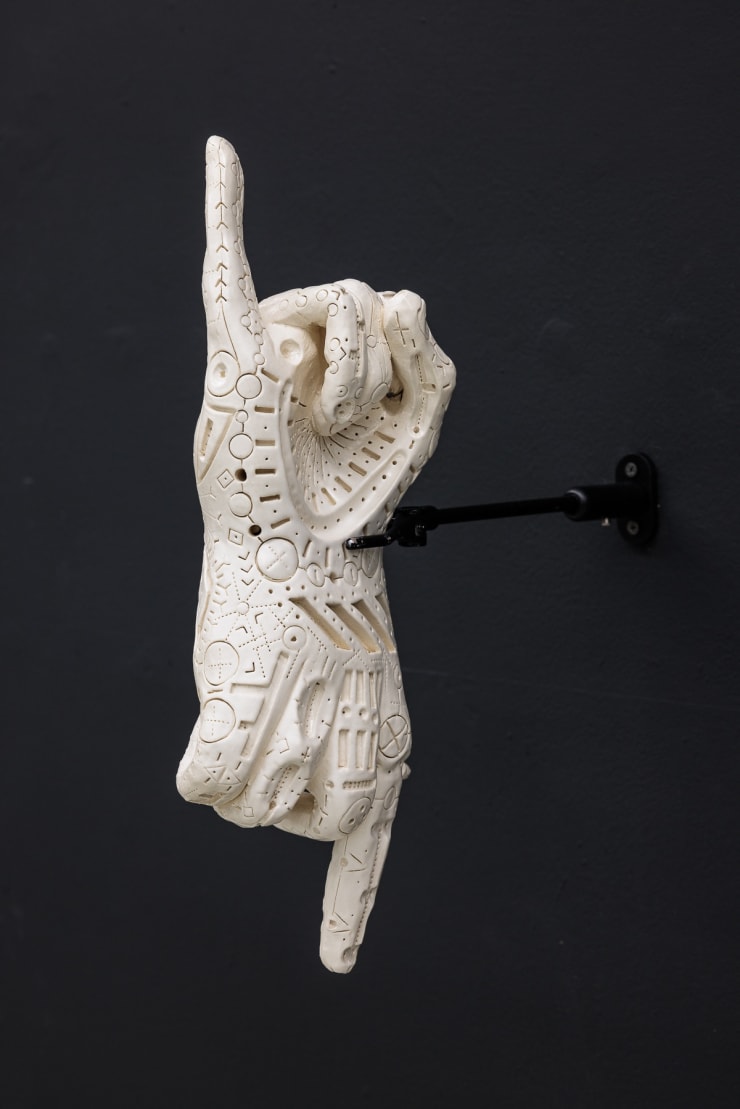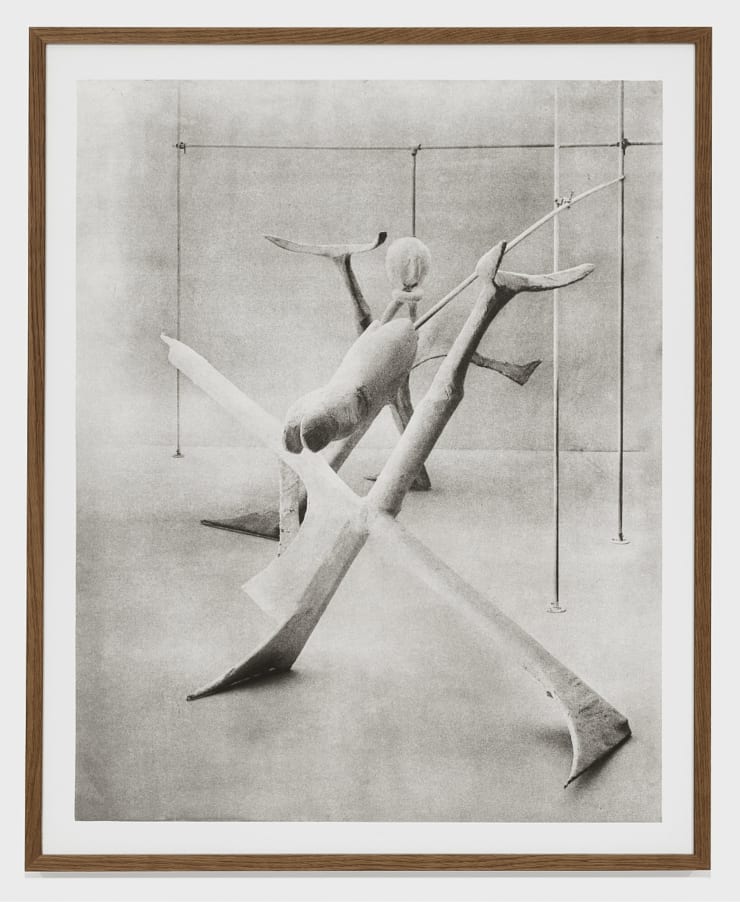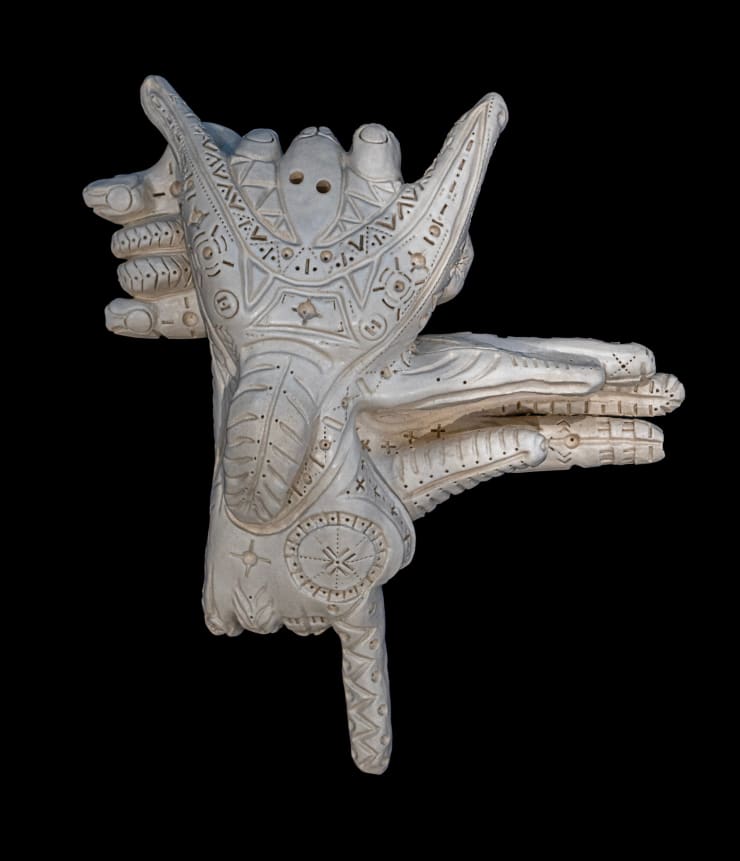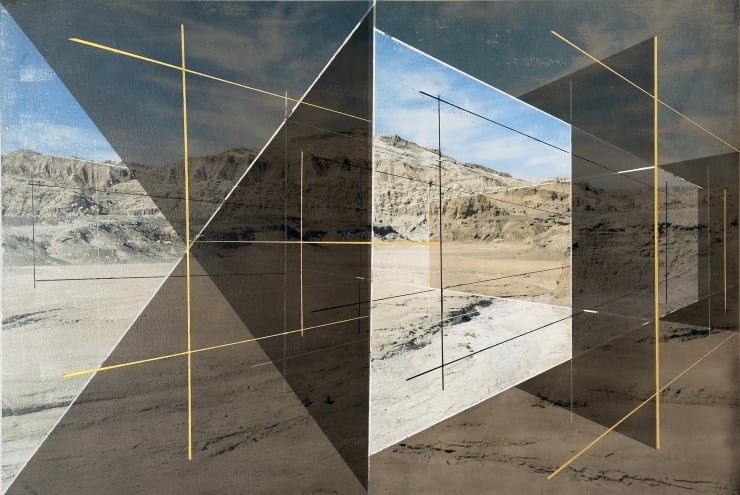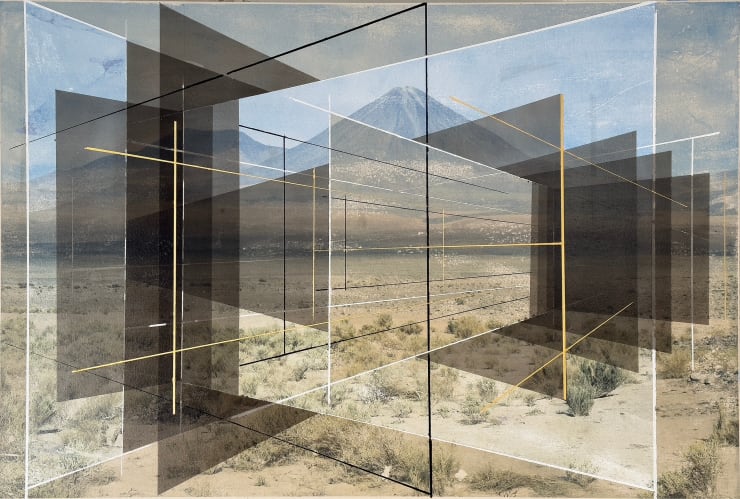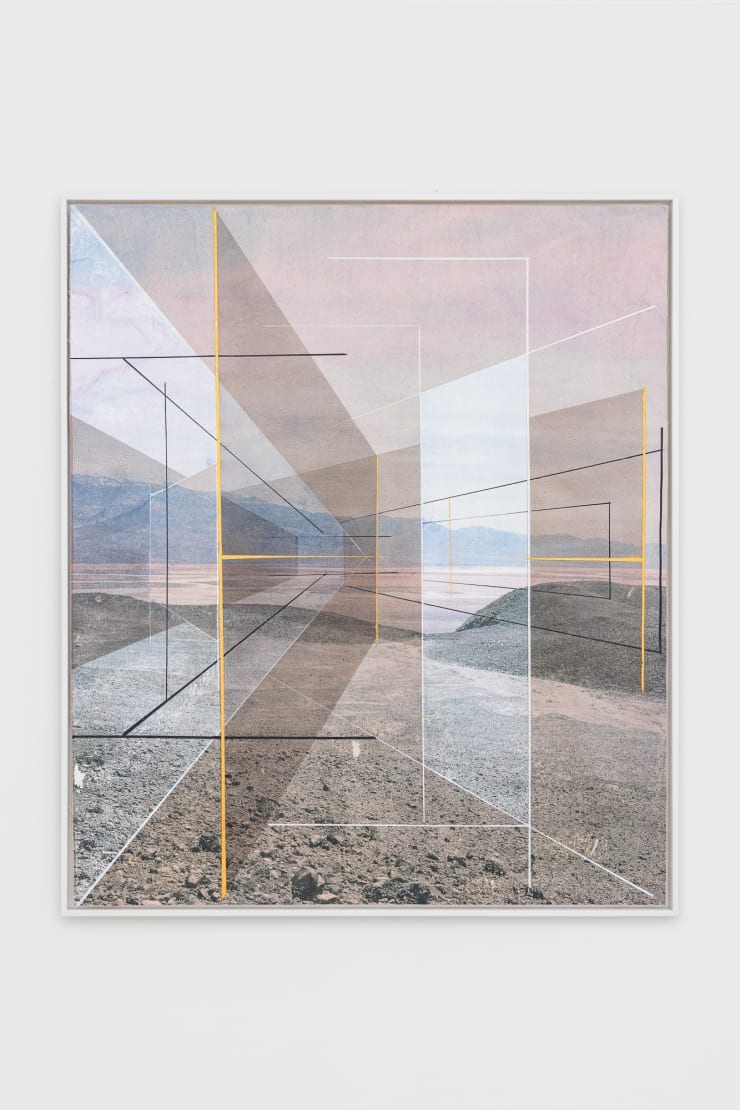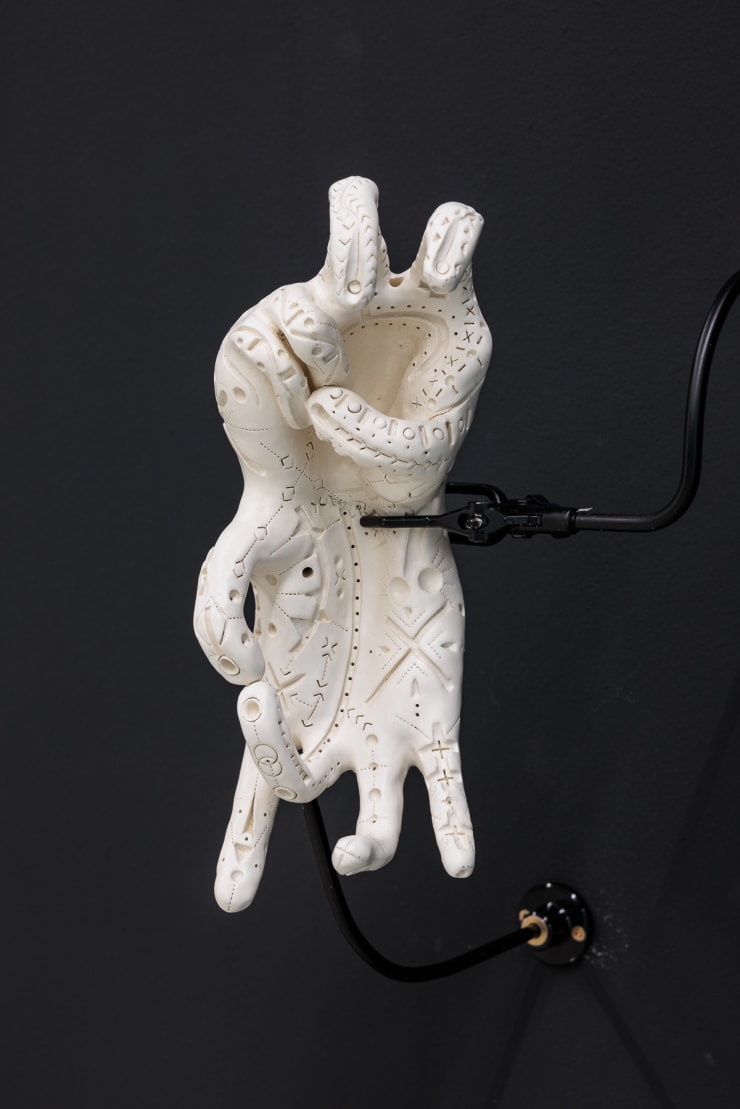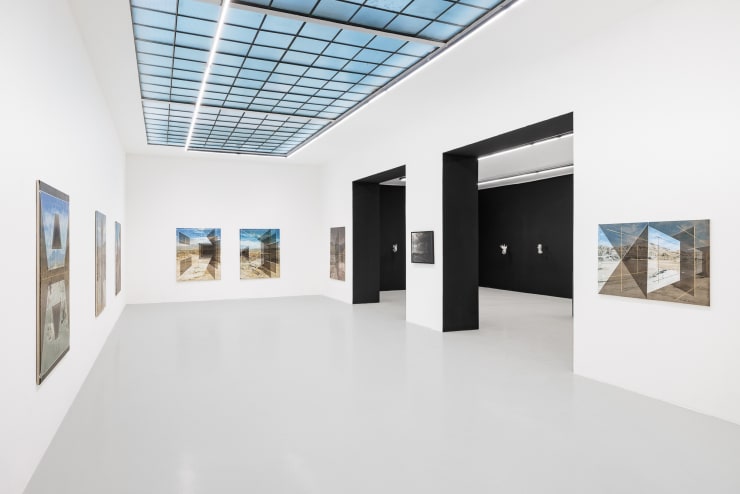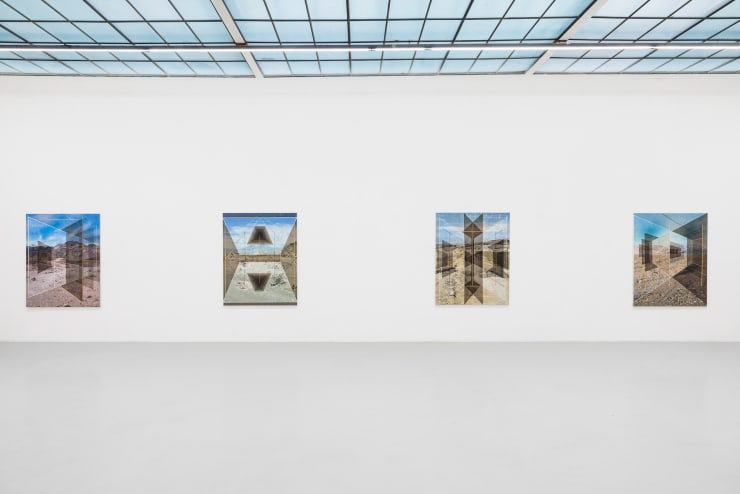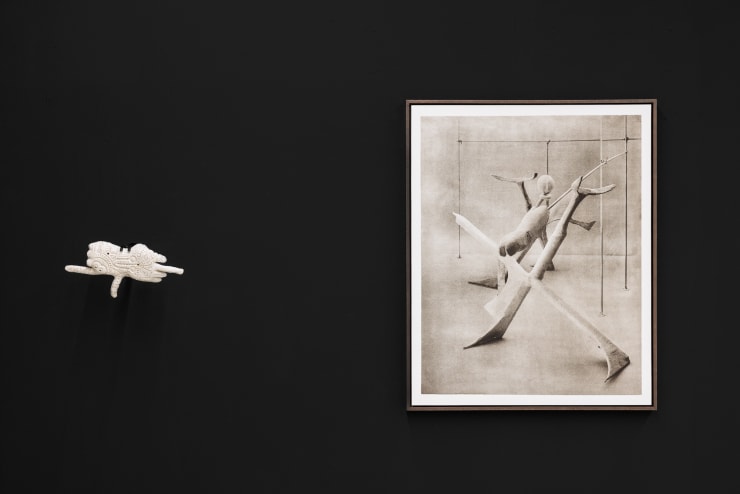Rodrigo Valenzuela: MUECAS
Past exhibition
Overview
Galerie Kandlhofer is pleased to present MUECAS, Rodrigo Valenzuela’s (b. 1982, Chile) seventh exhibition with the gallery. Bringing together works from his New Land and Garabatos series, along with the ceramic Muecas sculptures, this exhibition continues Valenzuela’s critical examination of the socio-political landscapes that shape human experience. His research-driven practice often focuses on the struggles of labourers, the persistence of historical injustices, and the potential for collective resistance. By isolating familiar forms and placing them in unexpected contexts, Valenzuela challenges the framework of collective memory, creating a compelling narrative around power and the ongoing struggle for agency.
Works
-
 Rodrigo ValenzuelaMueca #1, 2024Ceramic41 x 30 x 18 cm
Rodrigo ValenzuelaMueca #1, 2024Ceramic41 x 30 x 18 cm
16 1/8 x 11 3/4 x 7 1/8 in -
 Rodrigo ValenzuelaMueca #10, 2025Ceramic30 x 13 x 15 cm
Rodrigo ValenzuelaMueca #10, 2025Ceramic30 x 13 x 15 cm
11 3/4 x 5 1/8 x 5 7/8 in -
 Rodrigo ValenzuelaMueca #11, 2025Ceramic30 x 17 x 10 cm
Rodrigo ValenzuelaMueca #11, 2025Ceramic30 x 17 x 10 cm
11 3/4 x 6 3/4 x 4 in -
 Rodrigo ValenzuelaMueca #12, 2024Ceramic35 x 17 x 9 cm
Rodrigo ValenzuelaMueca #12, 2024Ceramic35 x 17 x 9 cm
13 3/4 x 6 3/4 x 3 1/2 in -
 Rodrigo ValenzuelaMueca #14, 2024Ceramic30 x 17 x 14 cm
Rodrigo ValenzuelaMueca #14, 2024Ceramic30 x 17 x 14 cm
11 3/4 x 6 3/4 x 5 1/2 in -
 Rodrigo ValenzuelaMueca #4, 2024Ceramic33 x 21 x 17 cm
Rodrigo ValenzuelaMueca #4, 2024Ceramic33 x 21 x 17 cm
13 x 8 1/4 x 6 3/4 in -
 Rodrigo ValenzuelaNew Land C002, 2025signed at the backAcrylic and Toner on Canvas152 x 120 cm
Rodrigo ValenzuelaNew Land C002, 2025signed at the backAcrylic and Toner on Canvas152 x 120 cm
59 7/8 x 47 1/4 in -
 Rodrigo ValenzuelaNew Land C003, 2025signed at the backAcrylic and Toner on Canvas151.5 x 120 cm
Rodrigo ValenzuelaNew Land C003, 2025signed at the backAcrylic and Toner on Canvas151.5 x 120 cm
59 5/8 x 47 1/4 in -
 Rodrigo ValenzuelaNew Land C012, 2025Acrylic and Toner on Canvas152 x 120.5 cm
Rodrigo ValenzuelaNew Land C012, 2025Acrylic and Toner on Canvas152 x 120.5 cm
59 7/8 x 47 1/2 in -
 Rodrigo ValenzuelaNew Land C020, 2025Acrylic and Toner on Canvas150.5 x 120.5 cm
Rodrigo ValenzuelaNew Land C020, 2025Acrylic and Toner on Canvas150.5 x 120.5 cm
59 1/4 x 47 1/2 in -
 Rodrigo ValenzuelaNew Land C021, 2025Acrylic and Toner on Canvas150 x 120.5 cm
Rodrigo ValenzuelaNew Land C021, 2025Acrylic and Toner on Canvas150 x 120.5 cm
59 x 47 1/2 in -
 Rodrigo ValenzuelaNew Land C022, 2025Acrylic and Toner on Canvas150.5 x 120 cm
Rodrigo ValenzuelaNew Land C022, 2025Acrylic and Toner on Canvas150.5 x 120 cm
59 1/4 x 47 1/4 in -
 Rodrigo ValenzuelaNew Land C023, 2025Acrylic and Toner on Canvas150 x 120 cm
Rodrigo ValenzuelaNew Land C023, 2025Acrylic and Toner on Canvas150 x 120 cm
59 x 47 1/4 in -
 Rodrigo Valenzuela, Mueca #18, 2025
Rodrigo Valenzuela, Mueca #18, 2025 -
 Rodrigo Valenzuela, Mueca #15, 2025
Rodrigo Valenzuela, Mueca #15, 2025 -
 Rodrigo Valenzuela, Mueca #16, 2025
Rodrigo Valenzuela, Mueca #16, 2025 -
 Rodrigo Valenzuela, Garabato 1, 2024
Rodrigo Valenzuela, Garabato 1, 2024 -
 Rodrigo Valenzuela, Mueca #19, 2025
Rodrigo Valenzuela, Mueca #19, 2025 -
 Rodrigo Valenzuela, Mueca #17, 2025
Rodrigo Valenzuela, Mueca #17, 2025 -
 Rodrigo Valenzuela, Mueca #6, 2025
Rodrigo Valenzuela, Mueca #6, 2025 -
 Rodrigo Valenzuela, New Land C027, 2025
Rodrigo Valenzuela, New Land C027, 2025 -
 Rodrigo Valenzuela, New Land C025, 2025
Rodrigo Valenzuela, New Land C025, 2025 -
 Rodrigo Valenzuela, New Land C024, 2025
Rodrigo Valenzuela, New Land C024, 2025 -
 Rodrigo Valenzuela, New Land 235, 2024
Rodrigo Valenzuela, New Land 235, 2024 -
 Rodrigo Valenzuela, Mueca #20, 2025
Rodrigo Valenzuela, Mueca #20, 2025 -
 Rodrigo Valenzuela, New Land C029, 2025
Rodrigo Valenzuela, New Land C029, 2025 -
 Rodrigo Valenzuela, New Land #151, 2022
Rodrigo Valenzuela, New Land #151, 2022
Press release
Galerie Kandlhofer is pleased to present MUECAS, Rodrigo Valenzuela’s (b. 1982, Chile) seventh exhibition with the gallery. Bringing together works from his New Land and Garabatos series, along with the ceramic Muecas sculptures, this exhibition continues Valenzuela’s critical examination of the socio-political landscapes that shape human experience. His research-driven practice often focuses on the struggles of labourers, the persistence of historical injustices, and the potential for collective resistance. By isolating familiar forms and placing them in unexpected contexts, Valenzuela challenges the framework of collective memory, creating a compelling narrative around power and the ongoing struggle for agency.
Both his photographs and sculptures operate through translation - of medium, appearance, and context - blurring distinctions and allowing elements to dissolve into one another. His Garabatos series, in particular, presents ambiguous sculptural installations within interior spaces, unsettling the possibilities and limitations of non-verbal communication. Organic and industrial structures are pieced together to create compositions reminiscent of makeshift stages or abandoned machinery. This series stems from Valenzuela’s research into Latin American subcultures and music scenes during the dictatorship years, following Operation Condor - a CIA-led initiative aimed at suppressing socialist movements in South America by coordinating military regimes. Using archival images, magazines, and films, Valenzuela isolates bodily gestures, transforming these documentary sources into a distinct visual language. By recreating and photographing these movements as abstract sculptures, he conjures a reflection on collective memory and the visceral expression of suppressed voices.
His Muecas series features white ceramic sculptures cast from his own hands, posed in contorted, ambiguous gestures and mounted onto aluminium pipes and metal armatures. Inscribed on their surfaces are marks — chiselled dots, lines, and shapes - suggesting the presence of an unspoken or developing language. For Valenzuela, these gestures embody a "motion of desire," forming a lexicon of human expression that often goes unnoticed. By framing these works as attempts to communicate from a place of powerlessness, the Muecas contribute to a broader vocabulary of struggle and resilience.
The New Land series examines historical narratives such as Manifest Destiny and the Homestead Acts - policies that fuelled westward expansion while reinforcing white European-American supremacy. Created using a labour-intensive toner transfer process on raw canvas, these landscapes reference the bureaucratic burdens endured by immigrants, becoming metaphors for resilience and resistance. Incorporating photographs taken in the Atacama Desert in Chile and the American West, Valenzuela layers these images with hand-drawn elements and acrylic paint.
Valenzuela’s work constructs a powerful meditation on power, memory, and resistance. He underscores the intersections of history, identity, and labour, prompting viewers to reconsider the forces that shape social and political realities. In his practice, he blends archival aesthetics with the dynamism of performance, subverting the traditional role of galleries and museums as spaces of canonised beauty and knowledge. Instead, he advocates for a more egalitarian and intuitive approach - one that prioritises lived experience and bodily wisdom over institutional authority.
Both his photographs and sculptures operate through translation - of medium, appearance, and context - blurring distinctions and allowing elements to dissolve into one another. His Garabatos series, in particular, presents ambiguous sculptural installations within interior spaces, unsettling the possibilities and limitations of non-verbal communication. Organic and industrial structures are pieced together to create compositions reminiscent of makeshift stages or abandoned machinery. This series stems from Valenzuela’s research into Latin American subcultures and music scenes during the dictatorship years, following Operation Condor - a CIA-led initiative aimed at suppressing socialist movements in South America by coordinating military regimes. Using archival images, magazines, and films, Valenzuela isolates bodily gestures, transforming these documentary sources into a distinct visual language. By recreating and photographing these movements as abstract sculptures, he conjures a reflection on collective memory and the visceral expression of suppressed voices.
His Muecas series features white ceramic sculptures cast from his own hands, posed in contorted, ambiguous gestures and mounted onto aluminium pipes and metal armatures. Inscribed on their surfaces are marks — chiselled dots, lines, and shapes - suggesting the presence of an unspoken or developing language. For Valenzuela, these gestures embody a "motion of desire," forming a lexicon of human expression that often goes unnoticed. By framing these works as attempts to communicate from a place of powerlessness, the Muecas contribute to a broader vocabulary of struggle and resilience.
The New Land series examines historical narratives such as Manifest Destiny and the Homestead Acts - policies that fuelled westward expansion while reinforcing white European-American supremacy. Created using a labour-intensive toner transfer process on raw canvas, these landscapes reference the bureaucratic burdens endured by immigrants, becoming metaphors for resilience and resistance. Incorporating photographs taken in the Atacama Desert in Chile and the American West, Valenzuela layers these images with hand-drawn elements and acrylic paint.
Valenzuela’s work constructs a powerful meditation on power, memory, and resistance. He underscores the intersections of history, identity, and labour, prompting viewers to reconsider the forces that shape social and political realities. In his practice, he blends archival aesthetics with the dynamism of performance, subverting the traditional role of galleries and museums as spaces of canonised beauty and knowledge. Instead, he advocates for a more egalitarian and intuitive approach - one that prioritises lived experience and bodily wisdom over institutional authority.
Installation Views
-
 Rodrigo ValenzuelaInstallation View: MUECAS, Galerie Kandlhofer, Vienna, 2025
Rodrigo ValenzuelaInstallation View: MUECAS, Galerie Kandlhofer, Vienna, 2025 -
 Rodrigo ValenzuelaInstallation View: MUECAS, Galerie Kandlhofer, Vienna, 2025
Rodrigo ValenzuelaInstallation View: MUECAS, Galerie Kandlhofer, Vienna, 2025 -
 Rodrigo ValenzuelaInstallation View: 'MUECAS', Galerie Kandlhofer, Vienna, 2025
Rodrigo ValenzuelaInstallation View: 'MUECAS', Galerie Kandlhofer, Vienna, 2025 -
 Rodrigo ValenzuelaInstallation View: 'MUECAS', Galerie Kandlhofer, Vienna, 2025
Rodrigo ValenzuelaInstallation View: 'MUECAS', Galerie Kandlhofer, Vienna, 2025 -
 Rodrigo ValenzuelaInstallation View: 'MUECAS', Galerie Kandlhofer, Vienna, 2025
Rodrigo ValenzuelaInstallation View: 'MUECAS', Galerie Kandlhofer, Vienna, 2025 -
 Rodrigo ValenzuelaInstallation View: 'MUECAS', Galerie Kandlhofer, Vienna, 2025
Rodrigo ValenzuelaInstallation View: 'MUECAS', Galerie Kandlhofer, Vienna, 2025 -
 Rodrigo ValenzuelaInstallation View: 'MUECAS', Galerie Kandlhofer, Vienna, 2025
Rodrigo ValenzuelaInstallation View: 'MUECAS', Galerie Kandlhofer, Vienna, 2025 -
 Rodrigo ValenzuelaInstallation View: 'MUECAS', Galerie Kandlhofer, Vienna, 2025
Rodrigo ValenzuelaInstallation View: 'MUECAS', Galerie Kandlhofer, Vienna, 2025 -
 Rodrigo ValenzuelaInstallation View: 'MUECAS', Galerie Kandlhofer, Vienna, 2025
Rodrigo ValenzuelaInstallation View: 'MUECAS', Galerie Kandlhofer, Vienna, 2025 -
 Rodrigo ValenzuelaInstallation View: 'MUECAS', Galerie Kandlhofer, Vienna, 2025
Rodrigo ValenzuelaInstallation View: 'MUECAS', Galerie Kandlhofer, Vienna, 2025 -
 Rodrigo ValenzuelaInstallation View: 'MUECAS', Galerie Kandlhofer, Vienna, 2025
Rodrigo ValenzuelaInstallation View: 'MUECAS', Galerie Kandlhofer, Vienna, 2025 -
 Rodrigo ValenzuelaInstallation View: 'MUECAS', Galerie Kandlhofer, Vienna, 2025
Rodrigo ValenzuelaInstallation View: 'MUECAS', Galerie Kandlhofer, Vienna, 2025 -
 Rodrigo ValenzuelaInstallation View: 'MUECAS', Galerie Kandlhofer, Vienna, 2025
Rodrigo ValenzuelaInstallation View: 'MUECAS', Galerie Kandlhofer, Vienna, 2025



